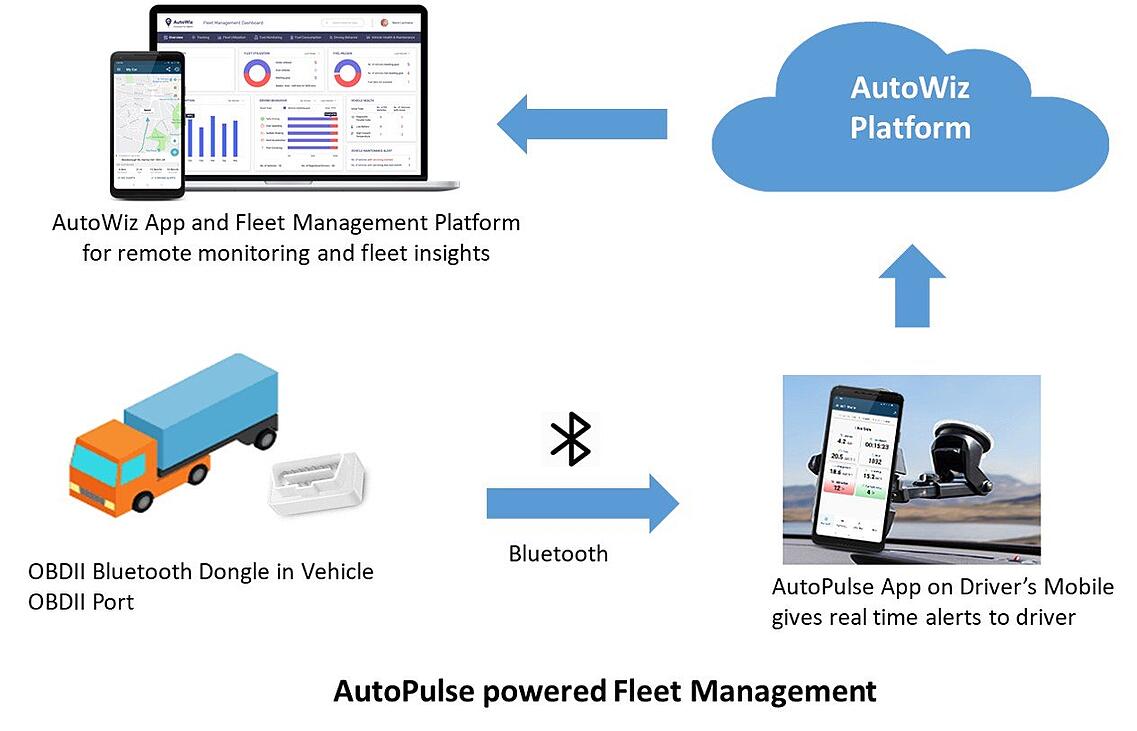Softening economy is impacting the revenue growth and profitability of Indian Transportation Industry, including Freight as well as Passenger transport. On the freight side, small to mid-size freight operators are getting squeezed out, as the high growth (and high margin) business (such as Express/3PL) being cornered by large organized players and high competition in low margin business (such FTL). As a result, Small and medium transporters are unable to pass on increasing fuel cost to customers. With about 90% of players in the industry having less than 20 trucks, problem affects a large segment of commercial vehicle owners.

Technology as an advantage
The way forward for the small to medium truck segment is to become efficient and adopt technologies that remove inefficiencies from their operations. These include:
1. Increase average on-road speed of vehicles – implying less time spent in idling, unnecessary stoppages and optimized routing
2. Reducing Vehicle maintenance and spares costs – monitoring driving behaviour that impacts tyre wear, stress on engine or risks accidents/damage to cargo
3. Fuel efficiencies – monitoring any fuel pilferage and encouraging driving that help save fuel
While the need for adopting such technology is high, paradoxically, when we speak to small to medium truck owners (or aggregators that work with them) about Connected Vehicle solutions for the above use cases, the willingness to pay for such technology is quite low. Very soon, the discussion veers towards low capex/opex cost expectations that seem difficult to meet.
With low cost smartphones available with truck drivers, we expect the need for tracking vehicle to be solved using (free) App based tracking solutions. What is needed is to go beyond tracking and offer affordable solution that gives the same insights to a small operator that a large fleet operator gets with advanced telematics solution.
AutoPulse powered Fleet Management
Towards that end, we have developed AutoPulse, which is an affordable solution for small and medium fleet owners to get the insights they need. Powered by AutoPulse Bluetooth OBD Device (that works with both Heavy Duty and Light Duty Vehicles; and also with cars/vans), the Device connects the Truck’s OBDII port to Driver’s smartphone via Bluetooth. All existing BS-IV vehicles and upcoming BS-VI vehicles (from June 2020) have OBDII port from which the Device gathers the vital data related to Vehicle Health, Fuel consumption and Driving behavior. AutoPulse App running on Driver’s smartphone pushes data to AutoWiz Telematics Server in real time. AutoPulse consumes less than 100 MB of Smartphone’s data plan monthly (not so much a concern in mobile data volume rich country like ours). Device also has built-in memory to save data in case Driver’s smartphone is switched off or loses connectivity to the device for whatever reason.

Technology as an advantage
As a fleet owner, one can subscribe to AutoWiz Fleet Management portal or use the AutoWiz App (available in multiple Indian languages) and get insights related to:
1. Fuel consumption, fuel economy across your fleet and insights to save fuel
2. Fleet Utilization, Average speed and Driving hours
3. Compare driving behaviour for safe and economic driving
4. Get alerts for Engine Trouble Codes (DTCs) and High Coolant Temperature
5. Manage vehicle servicing and track fuel and servicing costs
With low capex and opex costs, AutoPulse can help drive efficiencies for SME truck operators, helping them remain competitive in the evolving freight transportation environment.
While the need for adopting such technology is high, paradoxically, when we speak to small to medium truck owners (or aggregators that work with them) about Connected Vehicle solutions for the above use cases, the willingness to pay for such technology is quite low. Very soon, the discussion veers towards low capex/opex cost expectations that seem difficult to meet.


